Culverts, Extreme Weather Events and Vermont’s Future Forests
September 24, 2021
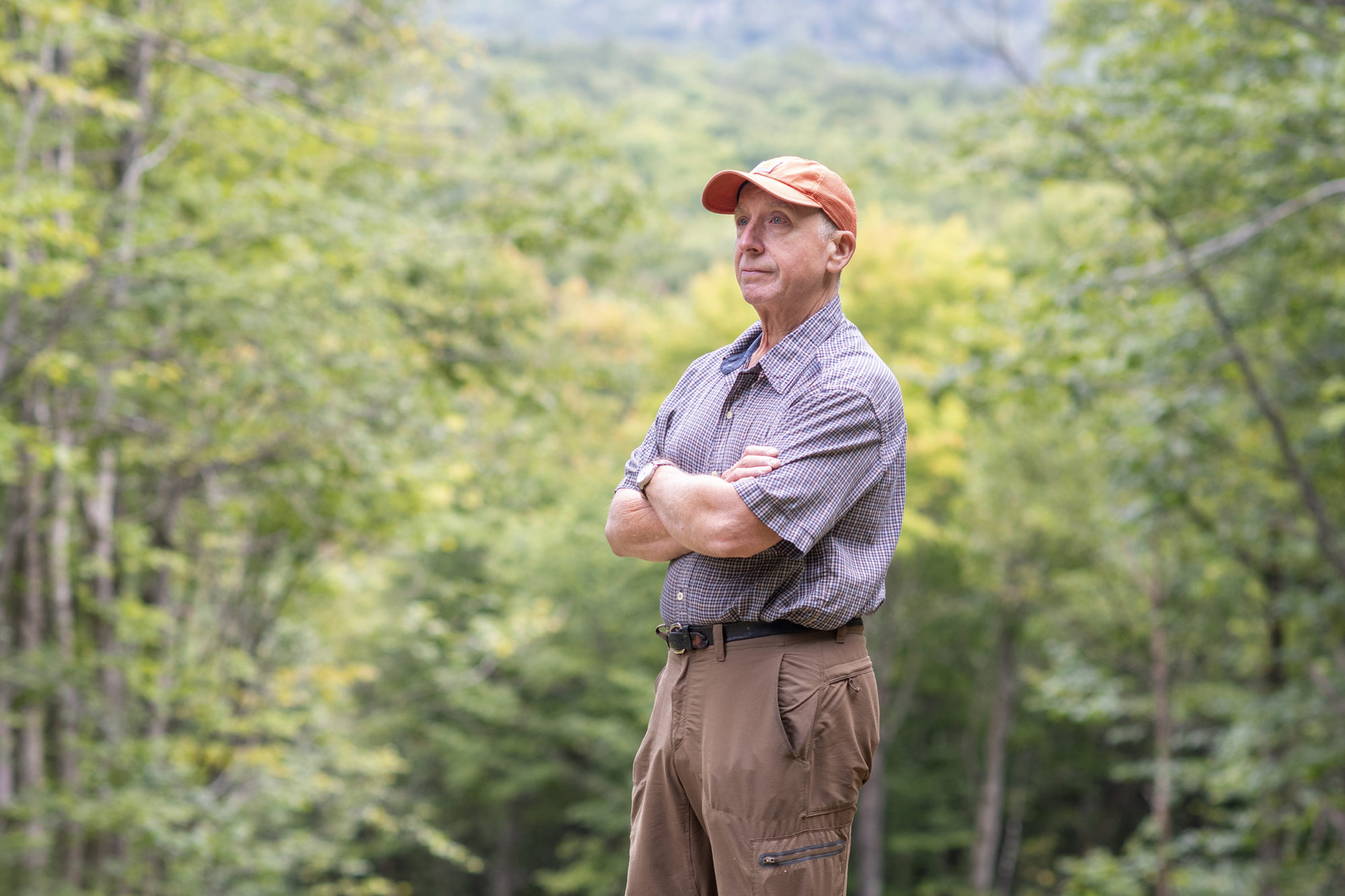
How Okemo State Forest is using one-time COVID-19 relief money to improve public access and forest resilience.
By Christine McGowan, Forest Products Program Director at Vermont Sustainable Jobs Fund
There is just one road up the backside of Mt. Holly in Okemo State Forest. Originally built in the 1980s for forest management, the road now also supports snow machines and skiers in the winter, hikers and mountain bikers in the warmer months, and the occasional horseback rider. For decades, recreation in the area was fairly light—mostly locals who knew the road was there. And then came COVID-19.
Tim Morton, state lands stewardship forester for Windsor and Windham counties, estimates the area saw a five-fold increase in recreational use during the pandemic, adding strain to an aging road that was already in various stages of disrepair. In addition to erosion from wear and tear, the original culverts were significantly undersized for the increased volume and flow of precipitation in recent years, causing washouts from increasingly frequent extreme weather events.
So when the Vermont Department of Forests, Parks and Recreation received $1.5 million in COVID-19 Relief funding to address increased use, Morton saw an opportunity to fix his road. And to expand recreational opportunities. And protect bear habitat. And improve truck access for a planned timber harvest. And address forest resilience in the face of extreme weather events.
And it all starts with upgrading a culvert.
Upgrading forest infrastructure.
“Without road access, you can’t accomplish anything,” said Morton, standing by a culvert in Okemo State Forest. “So we have to do the work when the money is there. It’s a long game.”
Morton’s long range management plan for Okemo State Forest—an 8,000-acre parcel that includes Okemo Mountain Resort, extensive snowmobile trails, and the 798-acre Terrible Mountain Natural Area—carefully balances a myriad of objectives in addition to recreation.
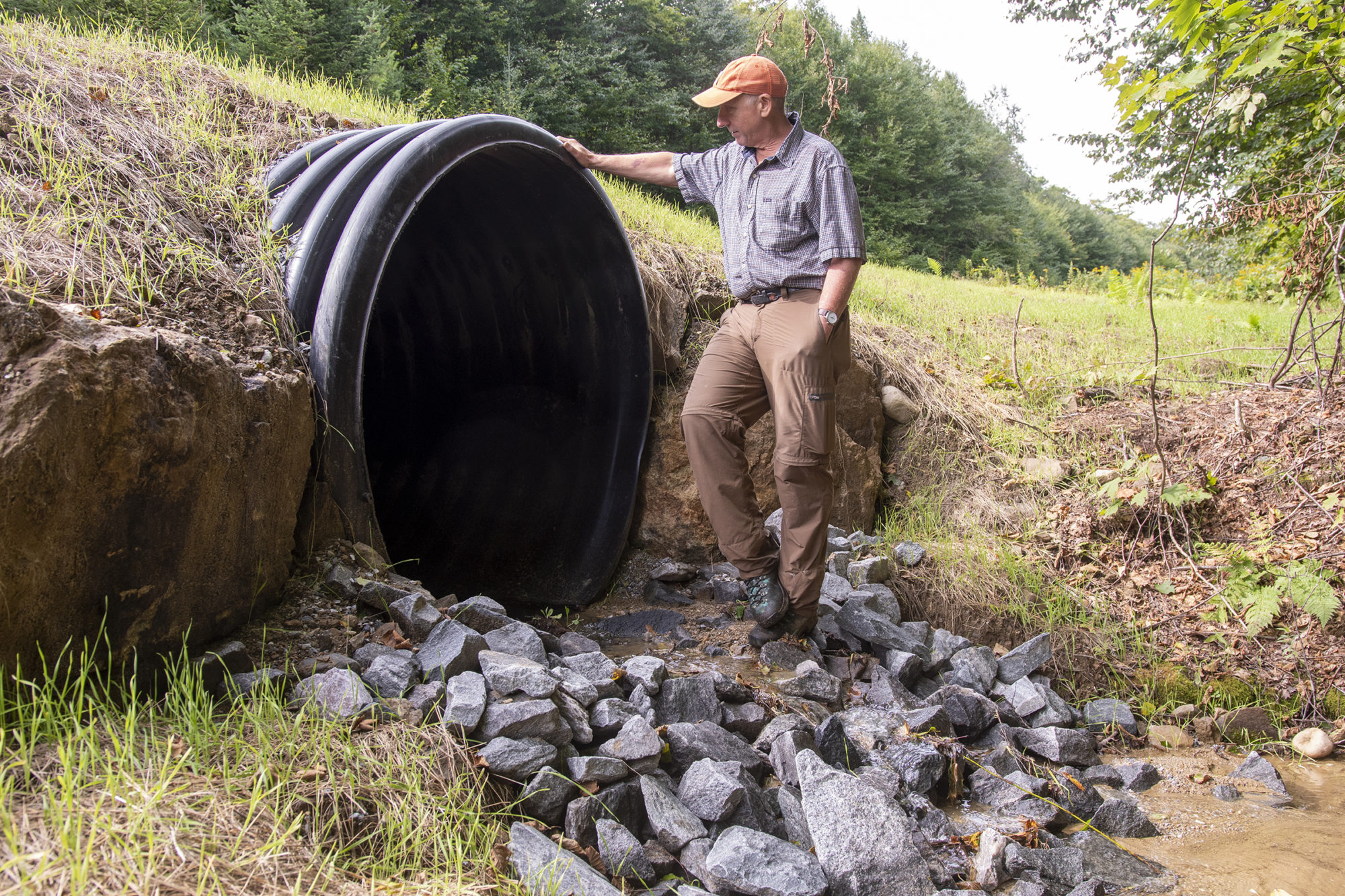
Tim Morton inspects a new culvert that helps carry water from numerous drainages from South Mountain in Okemo State Forest. Photo by Erica Houskeeper.
The road runs through early successional habitat for moose, deer, bear, pollinators, and other insects. “It’s very vibrant,” he said, “and an important area where wildlife are raising and rearing young.” Protecting black bear habitat is a priority, as the area’s vast beech population has been severely impacted by beech bark disease in the past two decades. Morton is introducing additional summer fruits as an alternative food source and looking at red oak to replace some of the lost beech.
He is also opening access to a section of the forest that has been inaccessible because the road was built for shorter log trucks that are no longer available. The planned harvest in this area will create canopy clearings to improve tree species variation, and help defray the cost of additional road and trail maintenance through the state’s land and facilities trust fund.
But looming over all of the forest’s many assets—recreation, wildlife habitat and timber harvesting—is a much larger concern, and one that now informs Morton’s plans at Okemo: the impacts of extreme weather events. With changes in weather patterns, temperature, and precipitation, Vermont’s forest industry is moving from monitoring and predicting the threat of extreme weather events to mitigating its impact through active management.
Flooding, erosion threaten Vermont forests.
While wildfires ravage other parts of the country, parts of Vermont are dealing with a different problem: too much water. According to the NOAA National Center for Environmental Information, average precipitation in Vermont has risen 6.7 inches per century—or about .7 inches per decade—since 1895.
“Our forest infrastructure has to account for these increases in precipitation,” said Alexandra Kosiba, a Vermont forester. “We are not going to make a big dent in slowing of damage through extreme weather events through forest management here in Vermont, but we can impact the effect of extreme weather events on our forests and communities.”
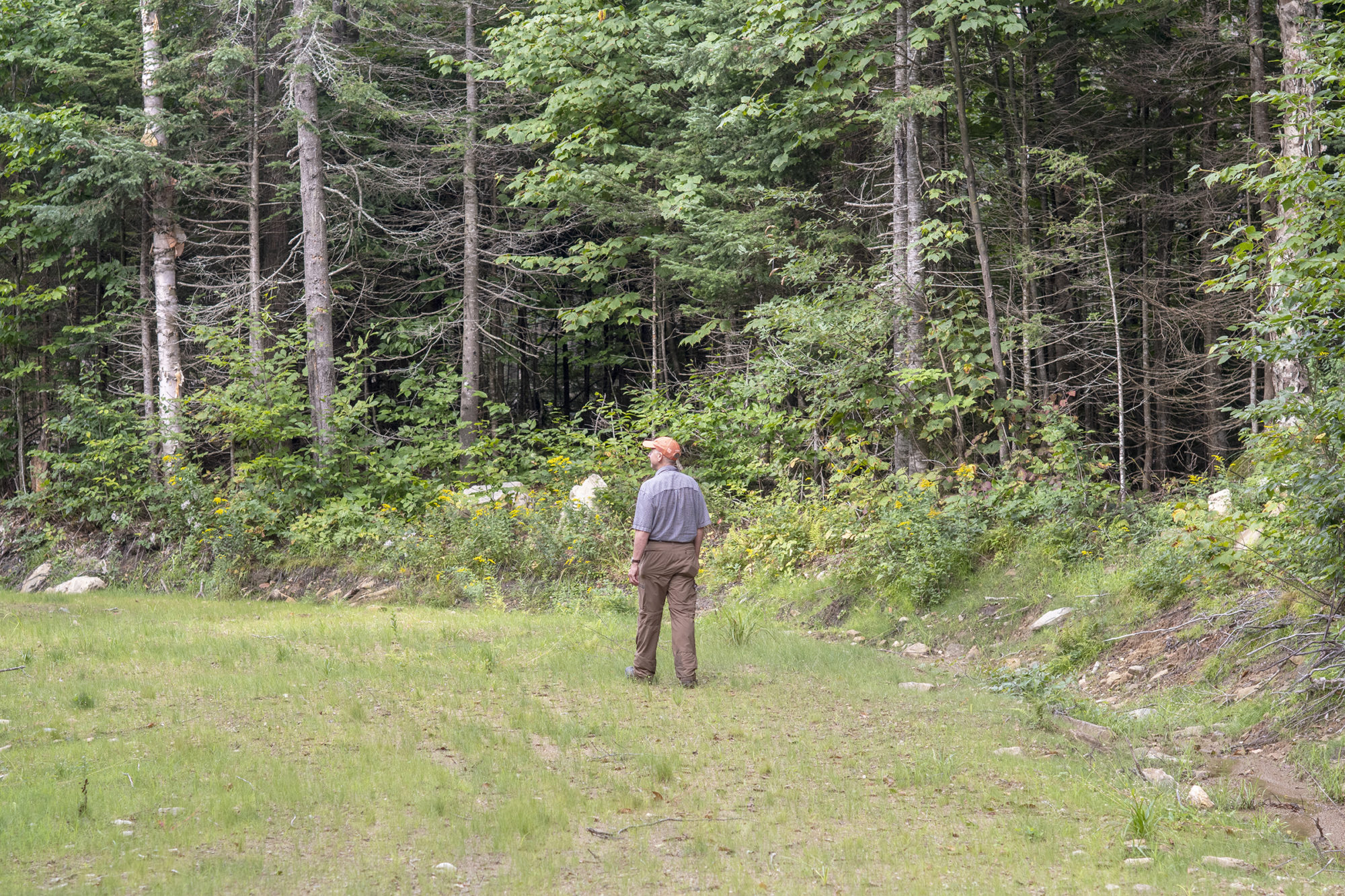
Tim Morton walks through Okemo State Forest, an 8,000-acre parcel that includes Okemo Mountain Resort, extensive snowmobile trails, and the 798-acre Terrible Mountain Natural Area. Photo by Erica Houskeeper.
The flooding and erosion that result from increased rainfall and extreme weather events can have a detrimental effect on the ecology of the forest, displacing carbon-rich soil and causing damage to infrastructure, such as log roads, that allow access for management and recreation.
So back to that culvert.
“The original culverts were undersized back in the eighties,” said Morton,“and they are nowhere near adequate to accommodate the increased volumes of water that come in short bursts during the summer months that we see today.”
Tony D’Amato, a professor and director of UVM’s forestry program, agrees. “With increased rain and unexpected extreme events predicted for Vermont, if you want access to areas in forests, you have to invest in roads, bridge crossings, and culverts.”
Restoration for adaptation.
Compounding the changes in weather patterns is Vermont’s history of land use, which included clear cutting 80 percent of the state’s forested land in the late 1800s. Although the forest has returned to the Green Mountain State, many areas have not rebounded to their former levels. They contain trees that are all roughly the same age and size, creating vulnerability to pests, invasive species, and extreme weather events.
Okemo State Forest is one of a few sites in Vermont where scientists and researchers who are studying forest resilience can test their ideas. “We are localizing these 30,000-foot ideas at Okemo,” said D’Amato. “Variety of species, complex forests, forest conditions— these are all ideas with theoretical and empirical backing, but those ideas need to be localized to the specific social, ecological, and economic context of a forest.”
“Forests can’t just pick up and move,” said Kosiba. “They don’t react quickly to change, but the conditions our forests live in are changing rapidly. Especially in the context of our past land practices, Vermont forests are vulnerable to extreme weather events, but we can help set them up to succeed. In Okemo, part of that work is increasing varieties within the understory by creating canopy gaps and removing some of the existing trees to allow other species to establish.”
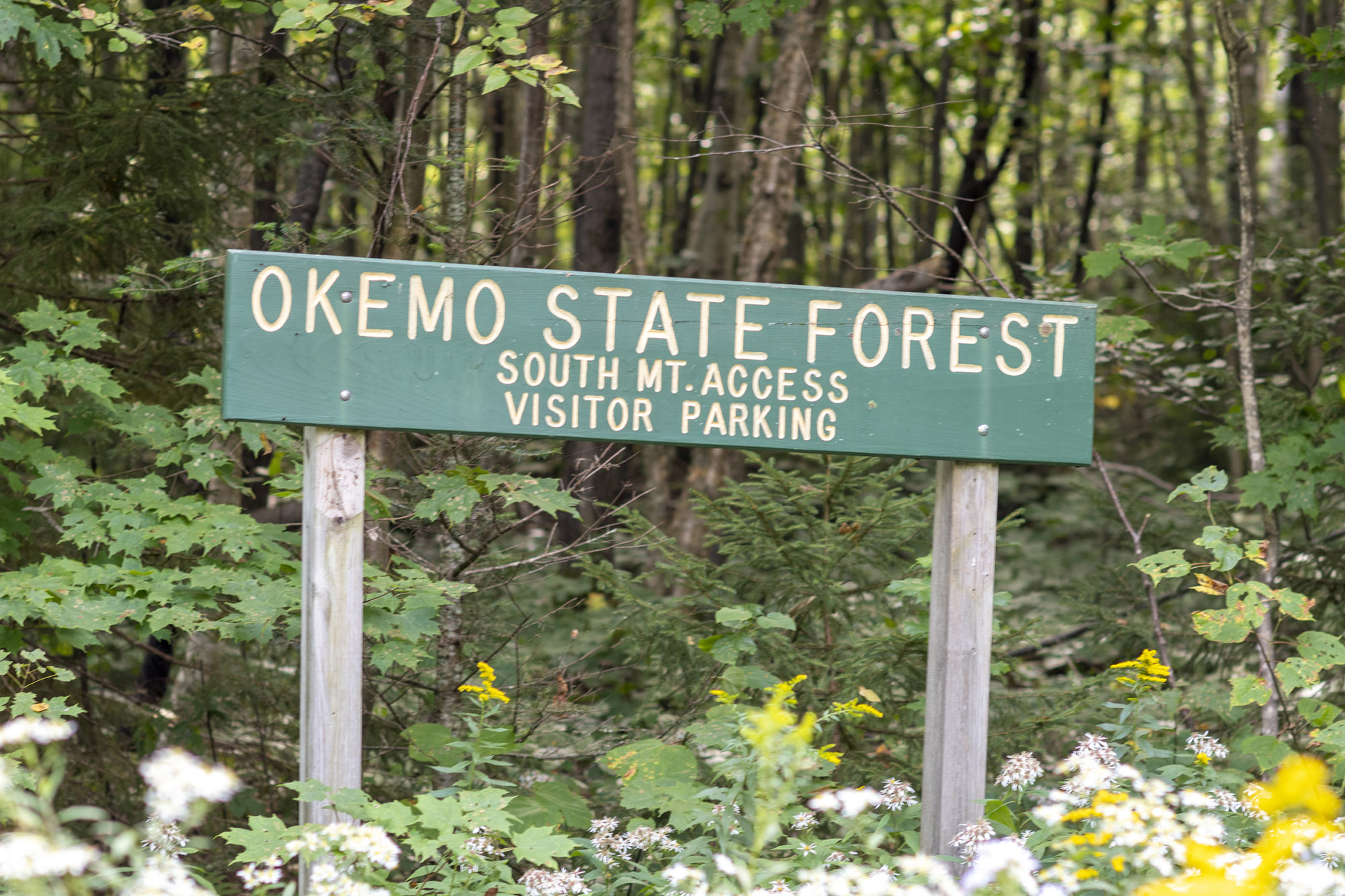
After the Vermont Department of Forests, Parks and Recreation received $1.5 million in COVID relief funding, there was an opportunity to fix an old access road in Okemo State Forest and expand recreational opportunities. Photo by Erica Houskeeper.
What D’Amato calls “restoration for adaptation” aims to restore ecosystem complexity over time in order to improve the forest’s resilience to the effects of extreme weather events. In Okemo, that means looking at species that are present in the forest makeup but in low supply, such as northern red oak, and creating conditions for young trees to thrive. He is also looking at species that are not currently present in the forest, but that do well just south—maybe 10 or 20 miles—such as black birch, bitternut hickory and black cherry, and introducing them to the forest composition.
“We’re not trying to re-engineer the forest,” said D’Amato, “we’re just increasing the number of cards in the deck that are future adapted.”
From the desk to the forest.
“The key to all of this is the forest industry,” said D’Amato. “Without loggers to do the work, the plans will never leave the desk. We can get excited about ideas as scientists, but the real infrastructure and capacity to get that done is our logging workforce and mills in the region. As we work to improve forest resilience, it’s also going to be important to not only sustain but enhance the regional forest industry.”
In Okemo, Morton has contracted Jarvis & Sons Excavating out of Ascutney and PFJ Logging and Trucking in Rockingham. The first order of business is improving the road and upgrading the culverts. Morton expects the timber harvest to take place sometime next year.
“We want our forests to be forests well into the future,” said Kosiba. “With thoughtful management we can help steward our forests through this crisis.”
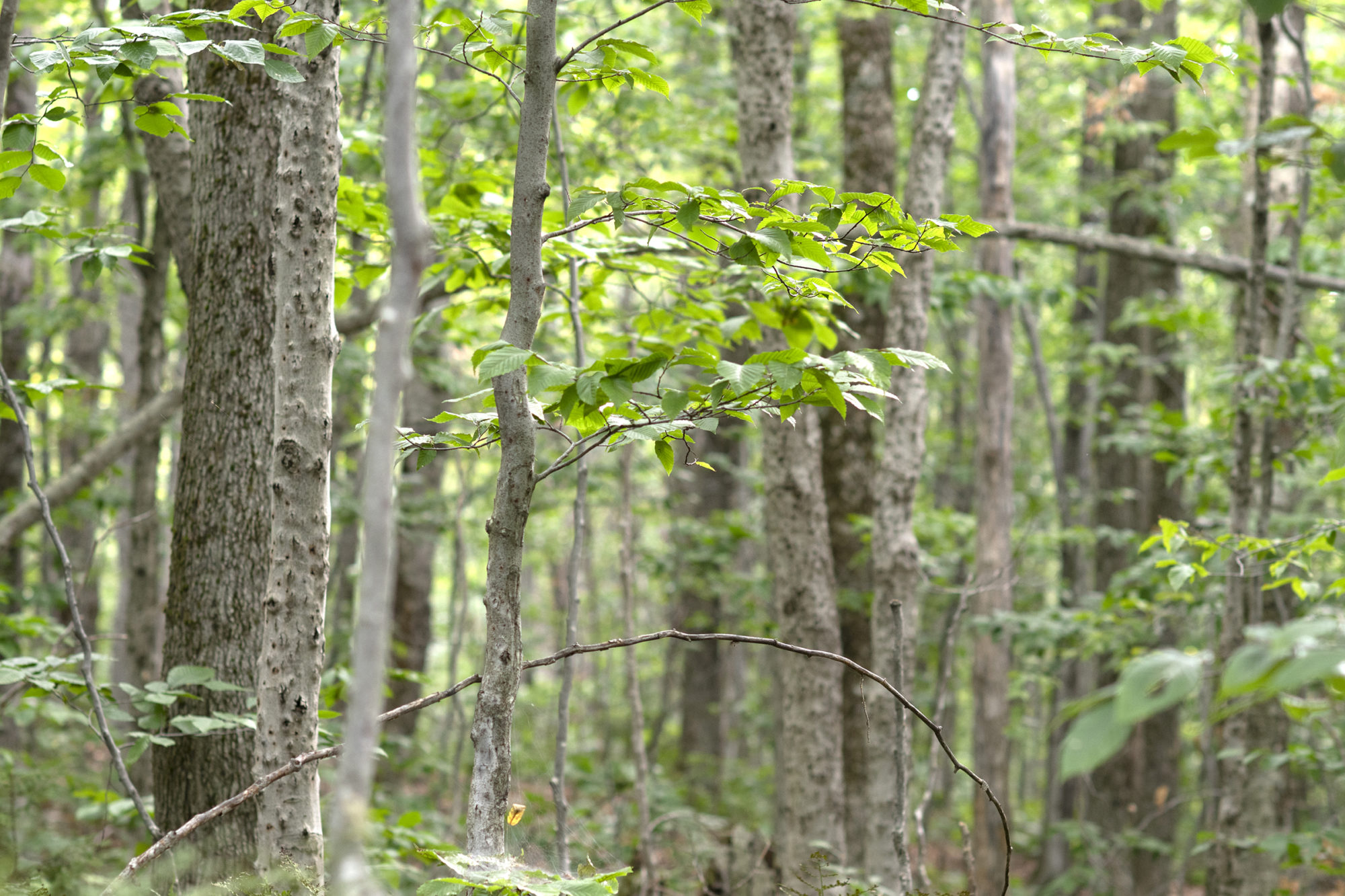
In Okemo State Forest, this one-half acre wooded area will be a log landing space for a future timber harvest. Photo by Erica Houskeeper.
About the Vermont Forest Industry Network
Vermont’s forest products industry generates an annual economic output of $1.4 billion and supports 10,500 jobs in forestry, logging, processing, specialty woodworking, construction and wood heating. Forest-based recreation adds an additional $1.9 billion and 10,000 jobs to Vermont’s economy. The Vermont Forest Industry Network creates the space for industry professionals from across the entire supply chain and trade association partners throughout the state to build stronger relationships and collaboration throughout the industry, including helping to promote new and existing markets for Vermont wood products, from high-quality furniture to construction material to thermal biomass products such as chips and pellets. Learn more or join at www.vsjf.org.
Read More Stories Like This:
- Vermont Tree Wardens: A Voice for the Forest
- A Vermonter’s Approach to Sustainable, Affordable Housing
- Rugged Ridge Grows Sugarbush, Business in Pace with the Forest
- Combined Heat and Power at Allard Lumber Saves Money, Jobs, and Environment
- Wood Curl Packaging Reduces Waste, Supports Healthy Forests and Local Economy




